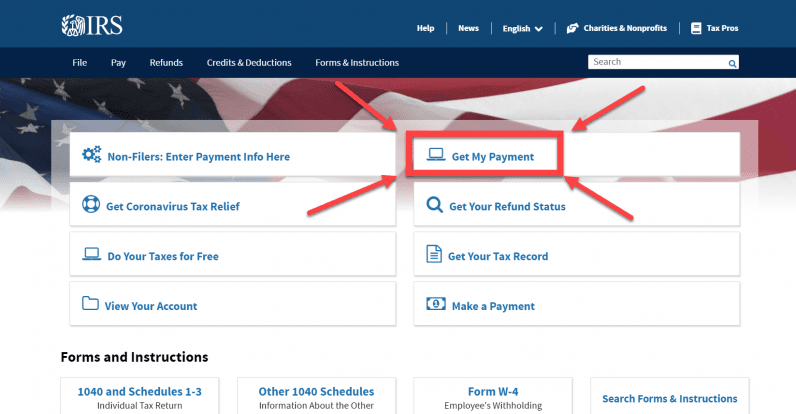Contents
Using a capital structure that has a substantial amount of debt allows them to increase returns by leveraging the seller’s assets. LBOs are often executed by non-public fairness firms who try to lift as much funding as attainable using various types of debt to get the transaction accomplished. Although the borrowed funds can come from banks, the capital can come from other sources as properly. Another criticism of LBOs is that they can be used in a predatory method. A leveraged buyout is the acquisition of another company using a significant amount of borrowed money to meet the cost of acquisition. The assets of the company being acquired are often used as collateral for the loans, along with the assets of the acquiring company.
- There is no doubt that private equity style cost-cutting and hedge fund activism happening at the same time is a scary prospect.
- A leveraged buyout, commonly referred to as an LBO, is a transaction that corporations use to amass other businesses.
- The risk is that the prisoner’s dilemma at the heart of the situation plays out badly.
- Leveraged buyout is one of the intriguing routes for those investors who do not have high equity in their pocket and can acquire another target company.
- After the acquisition of the company, the debt/equity ratio is usually higher than 1.0x (debt usually constitutes 50-eighty% of the purchase price).
- Usher in discussions with your prospective employer about the long-term financial ideas that the specific company might be invested in.
Perhaps LBOs are easier for Indian companies when they are acquiring an overseas target. Here, the acquisition company is set up abroad and as regards foreign debt, this company is bound largely by the banking norms and regulations of the foreign country. First and foremost, international banks have developed a comfort in financing LBO deals of Indian companies.
For institutional investors, Leverage Buyout is a strategy to acquire equity in a target company for investment. The word ‘Leverage’ suggests significant debt taken by the investors from the financial institutions against the assets of the target company. The word ‘Buyout’ suggests the gaining of controlling majority of the target company to control the cash flow to service the debt and performance of the company.
Leveraged Buyouts in the technology of globalization mergers and acquisitions have surmised sizeable consequentiality inside us and across borders. These sorts of acquisitions require a sizably voluminous amount of finance. Leveraged Buyouts have emerged as a mechanism to finance these acquisition deals.
Tips to Prepare for Finance Interview
However, if the risk can be mitigated properly, then ordinary shareholders enjoy benefits. Decisions made by managers in the form of increasing investment options are important for valuation of the firm. If managers underinvest, there is a good risk of losing marketplace shares and advantages from the economics of scale . A business management software solution such as TallyPrime is an integral part of the business. TallyPrime drills down to the deepest aspects of your business so you can get a complete view of how your business is operating.

The only segment where banks are permitted to do so is in PSU disinvestment. Bankers say one of the reasons why M&As have been comparatively lower in India is the absence of LBOs. Interestingly, however, if an Indian company does an overseas LBO, an Indian bank can fund the acquisition. This can be either through overseas branches or raising foreign currency through domestic branches. The $8-bn Tata bid for Corus would be one of the biggest LBO plays, where Tatas will have to borrow from banks abroad to meet a chunk of the acquisition cost. Indeed, it was the house of Tatas which struck a landmark deal when it acquired the prized UK brand Tetley for 271m pounds in ’00.
Advantages and disadvantages of NOPAT
Its automation and reporting features enable your business to make sense of the data. TallyPrime is a complete solution that enables you to record every transaction about your business and derive a wealth of meaning from it so better decisions can be made. NOPAT and NOPLAT are often used interchangeably but they have a key difference that separates them both. NOPAT stands for net operating profit after tax and it looks at the profitability of the core operations of a business. NOPAT excludes taking into account the tax savings of a business due to debts.
Homogeneous to the term loan, the revolver has amortizations and interest rate. One of the most storied global companies, Toshiba Corp., is set to get a serious makeover. Global hedge funds and private equity firms including the likes of Paul Singer’s Elliott Management Corp. and Farallon Capital Management LLC are circling to, as activists like to call it, unlock value. Change is looking like a real possibility after months of chaos and uncertainty.

The income statement of a company is a detailed account of all its revenues, profits, and expenses. EBITDA stands for Earnings Before Interest, Taxes, Depreciation, and Amortization. It is a commonly accepted parameter to measure long-term corporate profitability and also a yardstick for company valuation. While both instances, result in stamp duties, in the latter, additional VAT challenges arise, which can be addressed depending on the facts of the case. This structure is feasible only if the acquirer is looking at acquiring a 100% stake in the target company.
In step with Jensen , LBO works as carrot and stick mechanism to improve the corporation’s cash float in addition to reducing fees. Management’s incremented possession and disposition to ameliorate fetches a right result; that is why the metaphor carrot is commonly applied. On the other hand, a high debt level and interest rate payments work as a “stick” to coerce the management lbo stands for to work harder. Jensen argues that accommodating debt payment acts as an incentive for managers to work strenuously. This formula is used when you aren’t aware of how much your business earned before tax deductions and interest expenses. Faced with this, Bain and Cinven have had to lower the acceptance threshold further for a second offer to have any chance of success.
Are NOPAT and EBIT the same?
EBIT is calculated by subtracting operating expenses from revenue and adding non-operating income. NOPAT and EBIT are different because NOPAT throws light on the operating profits after taxes while EBIT shows how much your business is making minus the interest expenses and taxes. The monetary sponsor can treat their investment as widespread equity or most well-liked fairness amongst other types of securities. Preferred fairness pays a dividend and has fee preferences to widespread fairness. Companies usually use a leveraged mortgage to finance mergers and acquisitions (M&A), recapitalize the balance sheet, refinance debt, or for general company purposes. But for foreign companies acquiring an Indian target it is quite a different story.
In other words, a leveraged buyout is when one company acquires one other using a big quantity of financing, meaning the buyout is funded with debt. The firm doing the buying in a leveraged buyout, typically a private equity agency, will use its assets as leverage. The belongings and cash flows of the corporate that’s being acquired are also used as collateral and to pay for the financing cost. In addition to this, many private companies in India are promoter-based or family-based. Majority of the equity and management is present with the promoter or the relatives of the promoter. The promoter/ relatives of the promoters may not want to divest their controlling stake in the company for additional capital.
The rationale behind such policy is for the investor or the promoter to provide for their contributions from their own resources. A leveraged buyout is the acquisition of a public or private company with a big amount of borrowed funds. A private equity firm acquires an organization using debt instruments as the vast majority of the purchase value.
If an Indian company acquires another in the country, local banks can finance the acquisition, but it cannot be an LBO. It’s a transaction where the cash flow or assets of the company that is being acquired is leveraged – i.e, money is borrowed against these – to take over the firm. LBOs can be done if the acquirer takes a major stake in the company, meaning over 51%.
LBO stands for Leveraged Buyout and refers back to the purchase of an organization while using primarily debt to finance the transaction. If investment is made in a public unlisted company or a private company by FII or any foreign entity, then the investment is regulated by the Reserve Bank of India. This restricts a PE firm from using assets of the target company as collateral to finance purchasing of the target’s shares. This is to ensure the safety of the domestic banks in regards to making advances against the shares.
Private fairness corporations usually use LBOs to buy and later sell a company at a revenue. The most successful examples of LBOs are Gibson Greeting Cards, Hilton Hotels and Safeway. Leveraged buyout is one of the intriguing routes for those investors who do not have high equity in their pocket and can acquire https://1investing.in/ another target company. The investors can come up with control over the management of the target company. However, there are certain risks if the investors cannot revive the business of the target company and conclusively the prospect of such cash flow for the interest repayment will not transpire.

However, the anticipated rebound out there after Labor Day 2007 did not materialize and the lack of market confidence prevented deals from pricing. By the end of September, the total extent of the credit score situation turned apparent as major lenders including Citigroup and UBS AG announced major writedowns due to credit score losses. As 2007 ended and 2008 started, it was clear that lending requirements had tightened and the period of “mega-buyouts” had come to an finish. A fully leveraged buyout is a sort of enterprise acquisition transaction in which the purchaser acquires the enterprise by contributing a minimal amount of their very own funds.
LBO definition / LBO means?
Even if the LBO model is impossible to carry out in India, the model of minority stake investment with contractual rights is a getaway for the PE firms to invest in Indian private companies. It does not allow for controlling majority in the private companies but does allowing for enough contractual rights to protect the investment and interest of the investors in the company. In India, Private Equity investments happen through the Foreign Institutional Investor route. This allows easy access to buying and selling of securities on the Indian stock market.
Investment for all
A leveraged buyout, commonly referred to as an LBO, is a transaction that corporations use to amass other businesses. The buyout includes a mixture of equity from the client, along with debt that’s secured by the target firm’s property. The deal is structured so that the goal firm’s property and money flows are used to pay for most of the financing value.